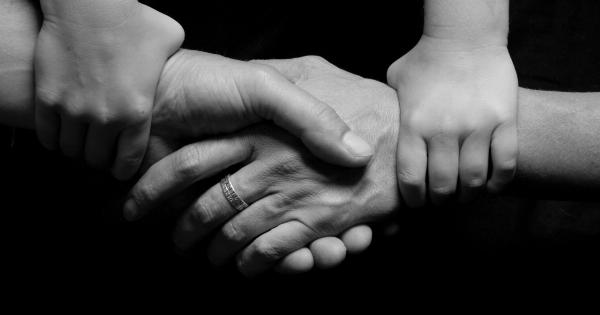Putting signs on your child or yourself can have severe consequences.
Whether it’s a sticker that says “My name is…” or a shirt that says “Please talk to me, I’m shy”, these signs can attract unwanted attention and potentially put you or your child in danger. In this article, we will explore the dangers of putting signs on your child or yourself and provide alternatives to ensure safety and peace of mind.
Danger #1: Stranger Danger
Children who wear signs that display their name, age, and other personal information can put them at risk of being approached by strangers with harmful intentions. Potential abductors can use that information to lure a child into a dangerous situation.
Similarly, adults who wear signs that reveal personal information about them put themselves at greater risk of becoming victims of identity theft or other potentially harmful situations.
Danger #2: Fueling Negative Stereotypes
Putting labels on children can fuel stereotypes and discrimination. For example, a child wearing a shirt that says “I have ADHD” may be perceived as difficult or disruptive, even if that’s not the case.
Similarly, a child who wears a shirt that says “I’m gifted and talented” may become a target for bullying. While labels can help identify children with medical or learning conditions, it’s important to consider the potential negative consequences of putting labels on other aspects of a child’s identity.
Danger #3: Lack of Privacy
Wearing a sign or label can make one feel exposed and vulnerable. This lack of privacy can exacerbate feelings of anxiety, especially in situations where one is already uncomfortable.
For instance, a child who is naturally shy may feel even more self-conscious when wearing a sign that encourages strangers to approach and chat with them.
Danger #4: Misrepresenting Identity
Labels can also create confusion about an individual’s identity. For example, a child who wears a sign that says “Boy” may not be considered “masculine enough” by their peers if they don’t conform to traditional gender norms.
Similarly, an adult wearing a shirt that says “I’m deaf” may be perceived as unable to communicate even if they can read lips or use sign language.
Alternatives to Putting Signs on Your Child or Yourself
Instead of putting signs on your child or yourself, there are alternative ways to ensure safety and provide identifying information. For instance:.
- Teach your child their full name, address, and phone number.
- Use identification bracelets or necklaces with emergency contact information.
- Craft a descriptive note in the event of lost.
- Keep a recent photo on your phone of your child in case of emergency.
- Use a GPS tracker for younger children.
Conclusion
Putting signs on your child or yourself may seem like a convenient way to provide information, but it can also put you or your child in danger.
By using alternative methods to ensure safety and provide identifying information, you can avoid these dangers and enjoy peace of mind.






























